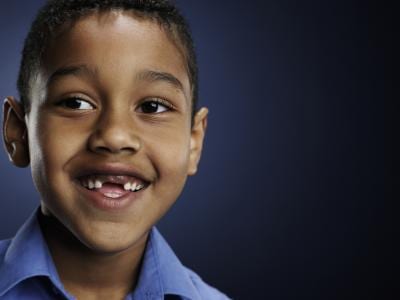Most children look forward to their first visit from the tooth fairy with anticipation. Parents may see their child’s first lost baby tooth as a sign that she is growing up too quickly. Either way, it’s a significant milestone in a child’s life. Most children start to lose their first baby tooth at around age 6 or 7, and continue until adolescence.
Range of Ages
While most children are 6 or 7 when they start losing their baby teeth, it can happen at a younger or older age. In general, the earlier your child developed baby teeth, the younger he will be when he starts to lose them. Some children even lose their first tooth when they are still in preschool, while others may be as old as age 8.
Dissolving Roots
It seems logical to think that baby teeth fall out because the permanent teeth are pushing them out. In reality, the roots of baby teeth slowly dissolve as your child ages. As the root dissolves, the tooth loosens. Once the tooth feels loose, the child usually wiggles it, which helps the process along.
Order of Loss
The bottom two front teeth are usually the first to fall out, according to Professor’s House. These are followed by the top two teeth. If all four teeth fall out in a short amount of time, your child may have trouble biting food. These are followed by the teeth on either side of the front teeth, bottom and top, and then the first molars. Next come the canines, and finally the second molars, which usually fall out when your child is around the age of 12.
Wiggle Room
It’s fine for your child to wiggle her loose tooth, whether with her finger or her thumb, but encourage her not to pull it out before it’s ready. Teeth that are ready to fall out do not usually fall out with a lot of blood, according to the Professor’s House website. Leave the tooth to fall out by itself. If you are worried about a tooth that just doesn’t seem to want to give up the ghost, take your child to see the dentist.
A Painful Smile
Your child’s smile looks different for a while when he is losing his teeth. The gaps left by missing teeth appear cute to some, and strange to others. Sometimes that gap-toothed grin isn’t much improved when the new teeth come in. Permanent teeth are often yellowish, have ridges and may look too large for your child’s face. This is normal, and as your child grows, the teeth will appear to “fit” his face better. As the permanent teeth come in, your child’s gums may be sore and swollen, especially when the molars appear. Treat the area with a cold compress or a pain reliever.





